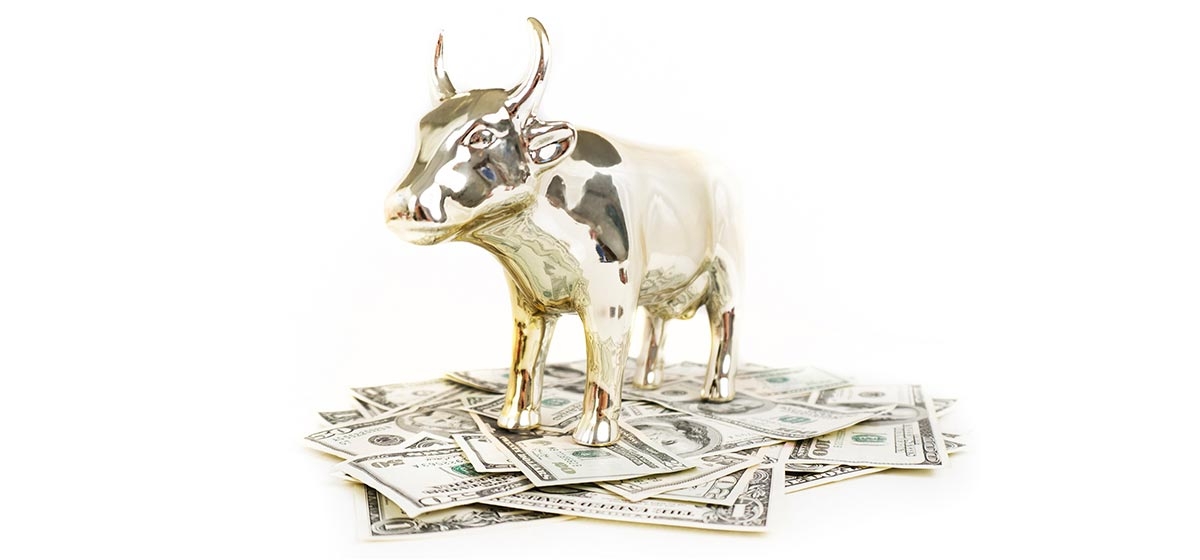Capital Preservation Paul, Part IV

Last week we observed how our investment competitors fared as they navigated a boring, so-so market environment. But this week things get more interesting.
As we will recall, Years 2 and 3 of our contest were Bull Market years. The equity markets were so strong that even highly diversified portfolios rose 15% in Year 2 and a remarkable 20% in Year 3. It doesn’t get much better than that.
Unfortunately, as I’ve frequently pointed out, and as precisely no one believes, the main mistakes investors make happen during Bull Markets, not during Bear Markets. I’m simplifying a bit, but typically what happens is this. When markets are very strong investors become wildly enthusiastic. They forget that risk exists and they let their equities ride. “Make hay while the sun shines,” is their motto.
If investors have a target of 65% to stocks, they typically start a Bull Market at that level. But as stock prices soar, their allocation to equities goes up and up. They’re letting their stocks ride, they’re buying on the dips, and eventually they’re buying on margin. At the peak of a Bull Market it’s not unusual for investors with a 65% target to equities to have 80% or even 90% of their capital invested in stocks.
This is a catastrophic mistake because, when the inevitable Bear Market comes around, you want—by definition you want—to have no more than 65% of your capital sitting in stocks, and preferably less. “By definition” because, when you established your strategic allocation you already assumed that there would be Bull Markets and Bear Markets. That’s why you targeted your equity exposure at 65%.
It’s bad enough to start with 65% of your money in stocks and find that, when stocks have dropped by half, you’ve lost 33% of your overall capital. But it could be much worse. Imagine that you are cruising along nicely with 90% of your money in stocks, oblivious of the freight train bearing down on your capital. Then one day that dip you were buying into turned out to be the opening prologue to a dreadful, capital-destroying Bear Market. If that Bear takes the stock market down 50%, and you’ve got 90% of your money in equities, you just lost 45% of your entire capital base. And if other sectors of the portfolio (hedge, commodities, real estate) also collapse, you could find yourself sitting on all of 35% as much money as you had at the peak of the Bull. That’s why, during bad Bear Markets, people jump out of high windows.
But enough hectoring. Let’s turn to our competitors and see how they’ve been doing.
Lauren Buffett, as usual, did very well during Year 2, matching the indexed portfolio’s 15% rise. But in year 3 Lauren began to fall behind, and she finished the year up 15%, well below the 20% increase achieved by the indexed portfolio. How come, if she’s so smart? There are two reasons. The first is that, during the more speculative, late stages of a Bull Market, the stocks that do best are those that are more, well, speculative. Weak companies that investors normally give a wide berth to suddenly take off because, what the hell, risk has been eliminated, right? Lauren doesn’t own speculative stocks and so she doesn’t benefit from the last, dodgy months of the Bull. Second, as equity valuations rise into nosebleed territory, Lauren begins selling even “good” stocks. After all, a good stock is one selling for an attractive price relative to its inherent value. But late in a Bull Market, the stocks of even good companies are selling way beyond what they are really worth. Still, Lauren’s done pretty well so far, with her portfolio worth $138,863.
Patient Patty performed about as we might expect. During the first year of the Bull Market, the clunkers in her portfolio held her back a bit, and she achieved a 13% overall return, not the 15% the indexed portfolio turned in. But then, in Year 3, when speculative stocks took off, Patty’s clunkers did very well and she matched the indexed portfolio’s return. After three years Patty’s initial $100,000 is worth $140,346—she’s actually ahead of the redoubtable Lauren Buffett! Patty would be dancing in the streets, except that, as we know, she doesn’t look at her portfolio and so she has no idea that she’s doing better than one of the world’s greatest investors.
Typical Tom was slow getting started in year 1 because, as we know, he was still below his equity targets. But as the market continued to run Tom finally woke up and began moving money into stocks. His slowness off the mark hurt him in Year 2, and he ended up with “only” a 10% return. But in Year 3 Tom made up for lost time. He poured money into stocks, blasting right past his 65% equity target. Roughly halfway through Year 3, Tom stopped selling bonds to buy stocks and started buying stocks on margin. As a result of this leverage, Tom beat the indexed portfolio in year 3, rising an amazing 23%. His portfolio is now worth $138,006—within spitting distance of the great Lauren Buffett and even within sight of Patient Patty and her automatic pilot-portfolio. Another few years of Bull Markets and Tom will be sitting very pretty, indeed.
And then there is good old Capital Preservation Paul. You might suppose that Bull Markets would make Paul happy, but all he can think about is how overvalued stocks are. He didn’t too badly in Year 2, rising 13% versus 15% for the indexed portfolio, but Year 3 was something else. Paul was now certain that stocks were way too rich and that a Bear Market was just around the corner. He not only began reducing his equity allocation below the 65% target, but he also kept his cautious stocks and managers, even though they were lagging the red-hot equity benchmarks. In Year 3 Paul’s portfolio rose 15% and it is now worth $133,849.
And so, investment fans, after one boring year in the markets and two Bull Market years, the standings look like this:
Patty…………………………………. $140,346
Lauren……………………………………. $138,863
Tom………………………………………. $138,006
Paul………………………………………. $133,849
Given that Lauren, Patty and Tom don’t use investment advisors, while Paul pays through the nose for a very fancy one who has expensive tastes, these results are, well, “ugly” is the word. Fortunately for Paul, to say nothing of his advisor, our contest isn’t over yet.





